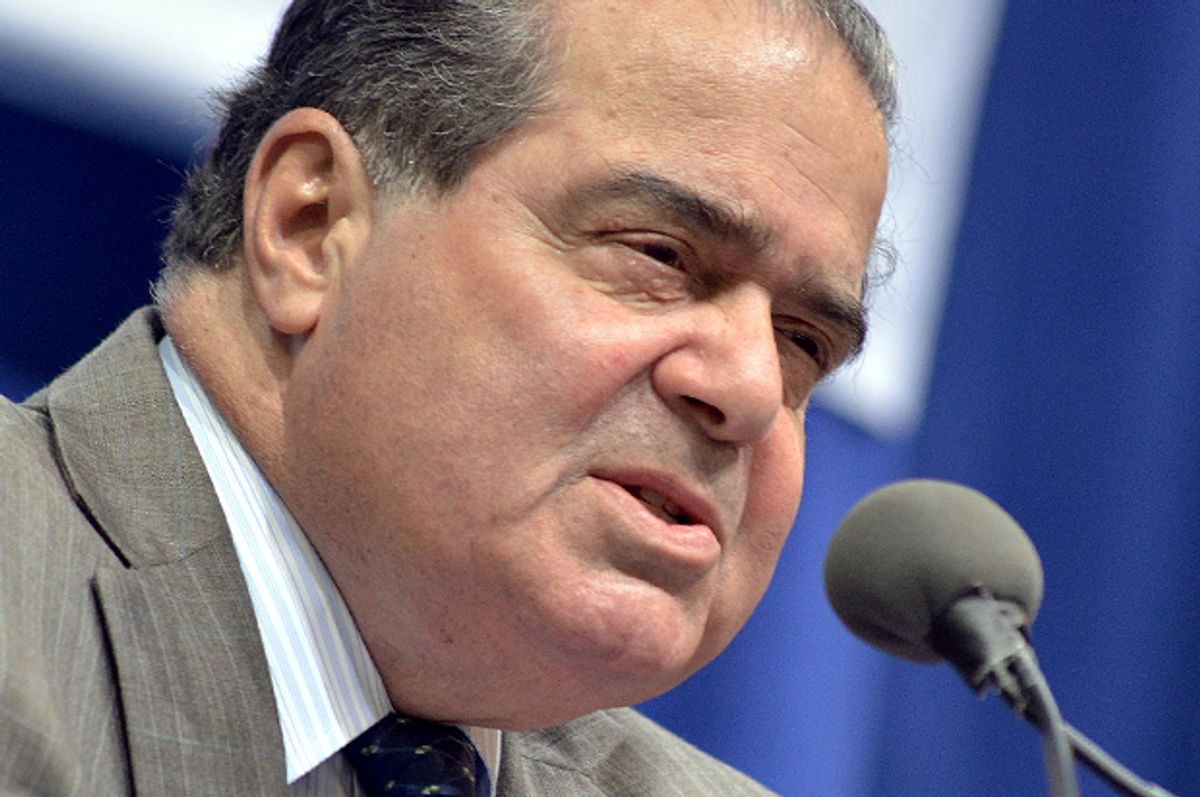The Supreme Court Monday delivered a major blow to President Obama's efforts to block harmful emissions from coal-fired power plants, siding with industry and red-state challengers against the EPA's decision to regulate mercury and other dangerous toxins -- a major initiative that, implemented this spring, had promised to prevent an estimated 11,000 premature deaths per year.
Justice Antonin Scalia wrote the 5-4 decision in Michigan vs. EPA. The regulations, the court determined, were not "appropriate and necessary" -- as required by the Clean Air Act -- because the agency failed to conduct a cost-benefit analysis before introducing them. From an earlier piece I wrote on the oral arguments, here's how the battle between the costs, on the coal industry's end, and the benefits, to public health, played out:
The argument brought by coal industry groups and 21 mostly Republican-lead states is that the EPA didn’t properly consider the rule’s cost before introducing it in 2012. Adopting the technology needed to comply with the regulations, the industry says, will cost $9.6 billion to implement, while only bringing $4 to $6 million in benefits: a low-ball estimate based on the effects of prenatal mercury exposure on I.Q., and nothing else.
The EPA maintains that it had to consider the health and environmental benefits of its rule before anything else, and could look at costs later on in the process. Along those lines, it found that the regulations would annually prevent an estimated 130,000 asthma attacks, 5,700 hospital and emergency room visits and 540,000 sick days — saving up to $90 billion a year in health benefits alone.
The United States Court of Appeals for the District of Columbia Circuit ruled 2-1, last year, in the EPA’s favor. “For E.P.A. to focus its ‘appropriate and necessary’ determination on factors relating to public health hazards, and not industry’s objections that emission controls are costly, properly puts the horse before the cart,” wrote Judge Judith W. Rogers for the majority. Yet the Supreme Court decided to take up the case, looking specifically at “whether the Environmental Protection Agency unreasonably refused to consider costs in determining whether it is appropriate to regulate hazardous air pollutants emitted by electrical utilities.”
According to the decision, the EPA “strayed well beyond the bounds of reasonable interpretation in concluding that cost is not a factor relevant to the appropriateness of regulating power plants.”
"EPA must consider cost -- including cost of compliance -- before deciding whether regulation is appropriate and necessary," it concludes.
In her dissent, Justice Elena Kagan countered that with past EPA rules, the courts have had no problem allowing the agency to consider costs later in the game. "The majority’s decision that EPA cannot take the same approach here -- its micromanagement of EPA’s rulemaking, based on little more than the word ‘appropriate’ -- runs counter to Congress’s allocation of authority between the Agency and the courts.”
The court's ruling has no bearing on the EPA's ability to regulate mercury. But the decision sends the rule, already decades in the making, back to the drawing boards -- yet another way of stalling the much-needed reforms. “[A ruling against the EPA] would set back the regulations a lot,” Jim Pew, an attorney at the environmental law firm Earthjustice, told ThinkProgress during the oral arguments. “It would be another chance for the industry to delay things and try to stop [EPA] politically, which is what they’ve been trying to do for 20 years.” The D.C. Circuit will now decide whether to strike the rule down entirely.
On the bright side, many companies had already begun to comply with the rules by installing the high-tech scrubbers needed to remove the pollutants from their emissions. But according to the Wall Street Journal, the ruling gives those who have been dragging their feet a considerable time extension, and could even allow utilities to reopen older coal plants.
Appearing on “Real Time with Bill Maher” Friday, EPA administrator Gina McCarthy promised that if the court ruled against the agency, she had no doubt they'd be able to "catch up."
"We’re still going to get at the toxic pollution from these facilities,” she said.

Shares